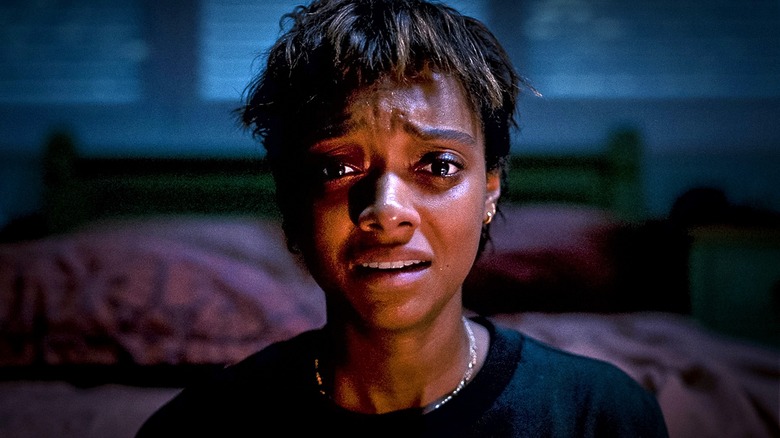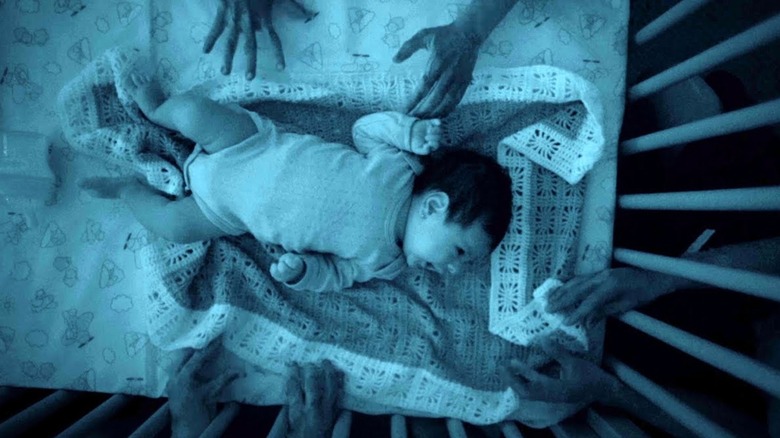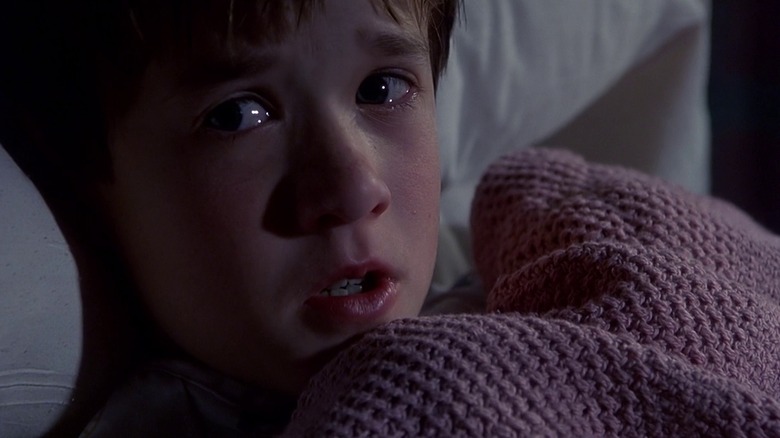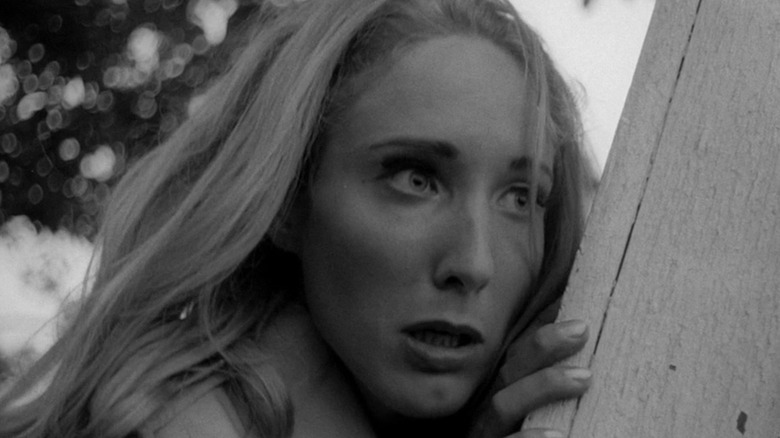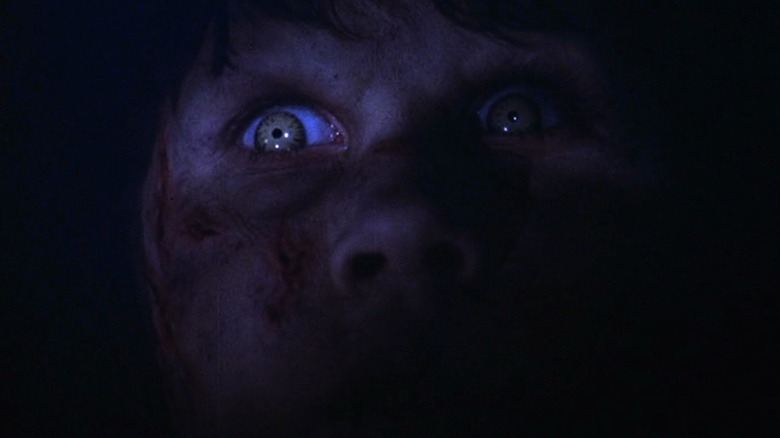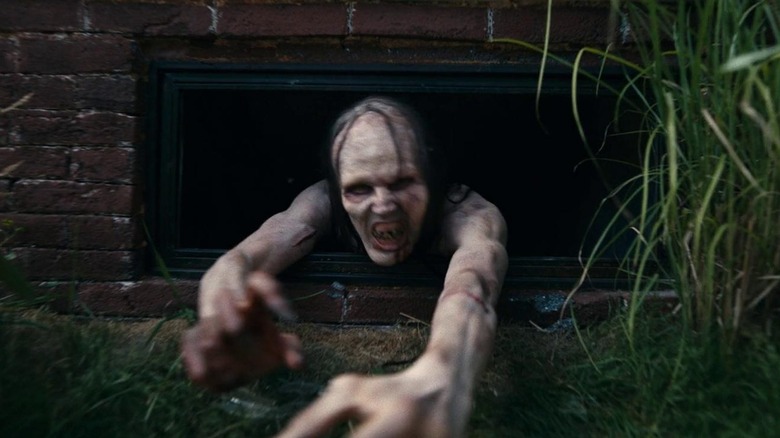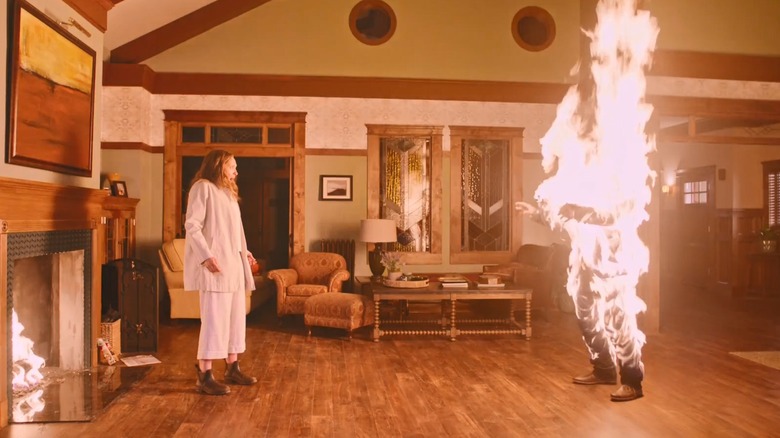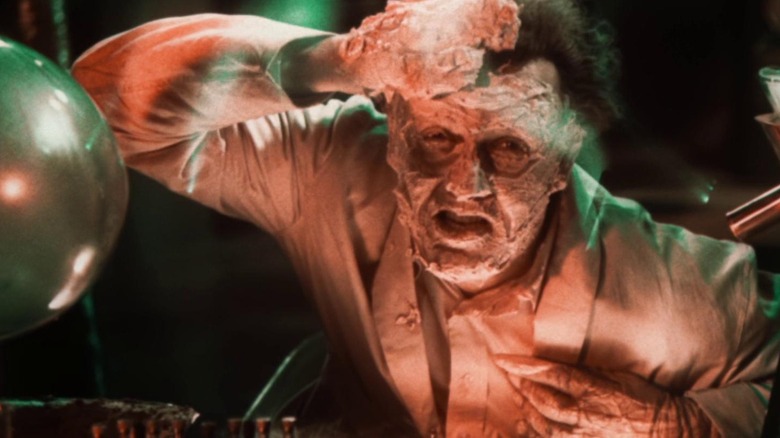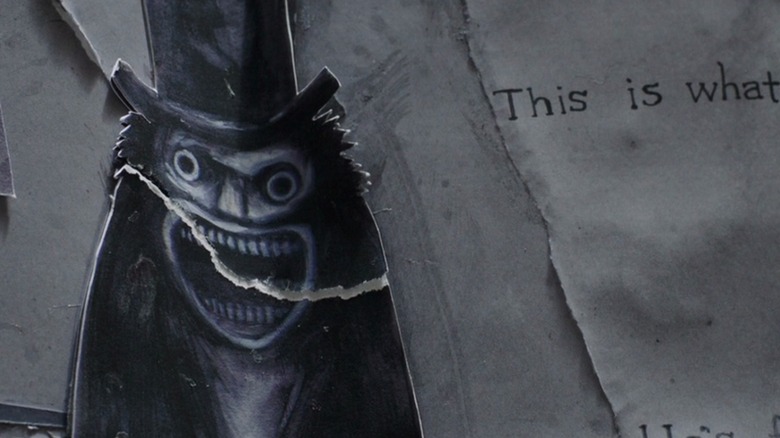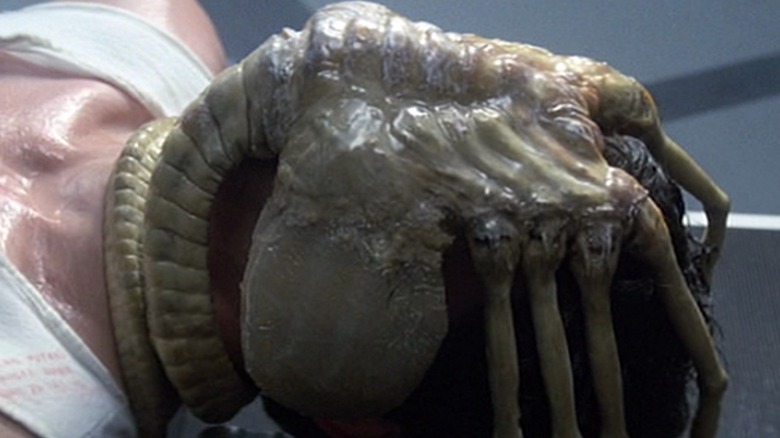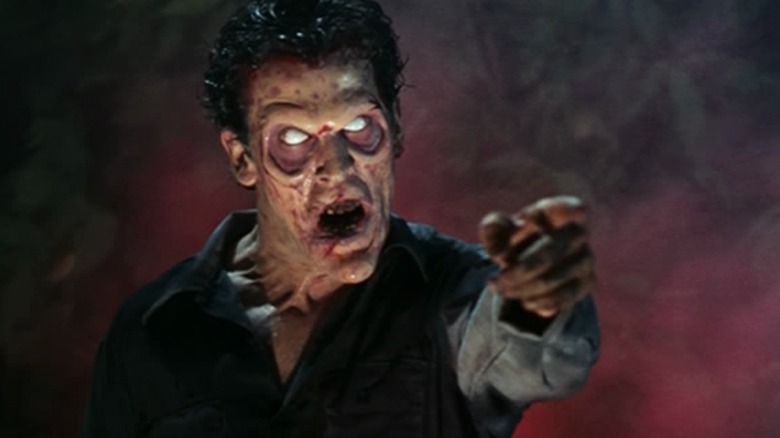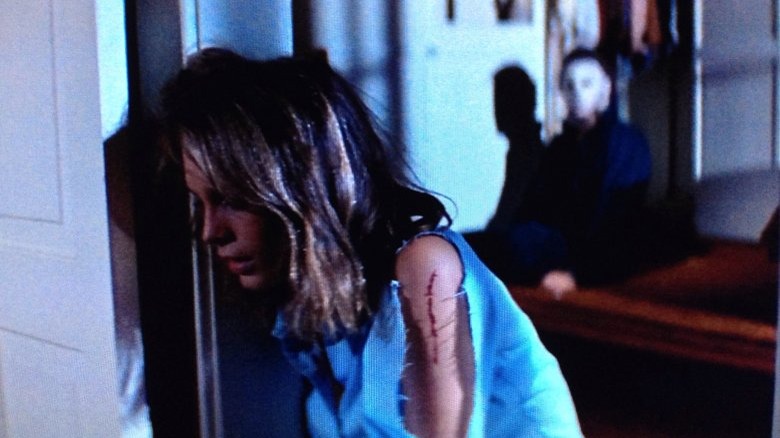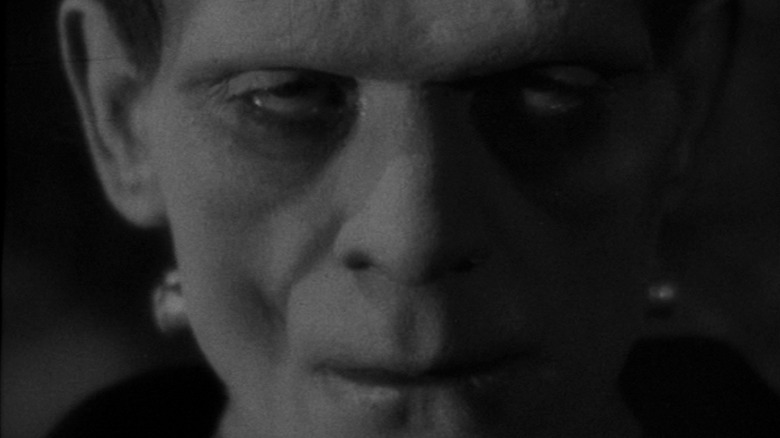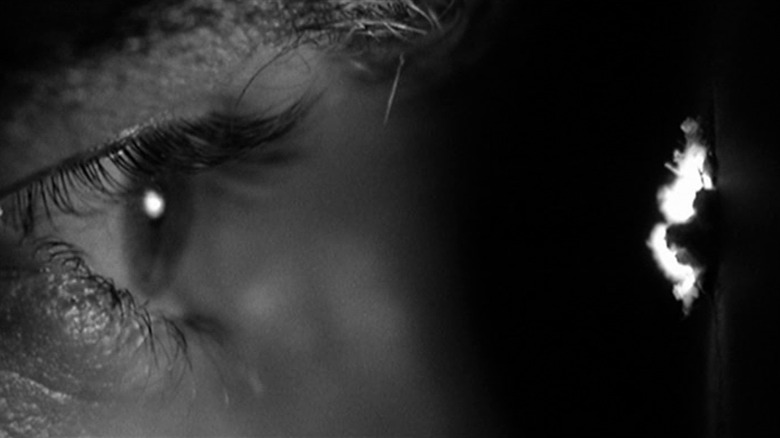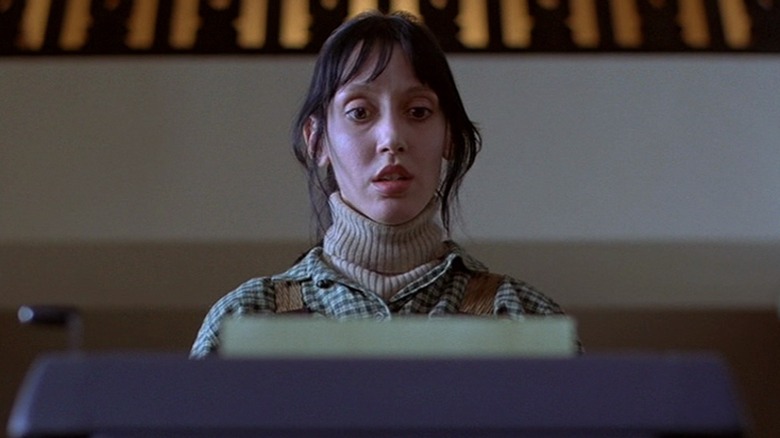The 14 Greatest Years In Horror History, Ranked
Horror is slaying the box office in 2023, accounting for 12 of the year's top 45 films through July. The genre is also killing it with critics: 43 horror movies are rated "Fresh" on Rotten Tomatoes. 2023 will likely go down as one of horror's greatest years, but not because of those reasons.
Horror fans know kills mean nothing without context. Because of ticket costs, comparing eras through the box office lens is like judging your waistline in a funhouse mirror. Similarly, critical praise can mislead because modern horror critics are often genre fans while, older generations many times did not understand the genre's value. When comparing horror eras, you need to close your eyes to tomatoes and ticket sales, and instead focus on your heart and your gut — then let it all spill out.
While ranking the 14 greatest years of horror cinema, I gave greater weight to foundational horror because it laid the groundwork for modern horror's ascension. "Haxan" (1922) may not scare or excite you like "REC" (2007), but films like "REC" only exist because films like "Haxan" terrorized audiences for decades. Horror is about more than terror, though. It's a tool used to critique social and cultural norms in provocative and subversive ways. Modern filmmakers understand its value and are using it to confront us with difficult topics before scaring the hell out of us. This will never be set in stone. It will always evolve with cultural shifts and technological advancements.
14. 2023 explores the dark side of family
Parenting can be brutal, and horror films aren't shy about taking off the kid gloves to bludgeon us with that universal theme. 2023 stands out because of the original ways filmmakers are exploring parenthood and absent parents.
"Talk to Me" will be remembered because of its brutal depiction of the consequences that follow a young woman's desire to see her late mother one last time. The paranormal hand at the center of the film already has claimed a prominent place in the annals of horror lore. "Skinamarink" is almost unwatchable and yet you can't look away — it's a feature-length creepypasta about how abandonment impacts young children. "Huesera: The Bone Woman" is an instant queer classic and one of the best examinations of new motherhood in horror, delving into transformation, isolation, postpartum depression, and what is essentially the ritualistic sacrifice of our former lives. It's a critical darling that will remain on horror lists for years to come.
"Cobweb," "Megan," and "Beau is Afraid" all explore the complicated relationships we have with our families, alive and dead. Many fans expecting another "Hereditary" from modern horror auteur Ari Aster are likely disappointed with "Beau is Afraid" because it's not as accessible. His uncomfortable exploration of grief will likely gain popularity as viewers figure out how to navigate its complicated storytelling. "Infinity Pool" and "The Outwaters" could be on similar trajectories as people discover them. While not about parenthood, "The Blackening" hilariously toys with cinematic stereotypes and could become a Juneteenth tradition for many people.
13. 1999 reshapes horror
Some of horror's greatest, most influential movies are splattered around the '90s, but we didn't see a geyser of greatness pour over us until 1999, a year that changed the genre. Many of us believed "The Blair Witch Project" was partially real. That expectation stripped away our defenses before we hit theaters, setting us up to be frightened by the slightest camera shake, whispering voice, or tree ornamentation. The final scene remains one of the scariest in horror. 1960's "Peeping Tom" may be the founder of the found footage genre, but "Blair Witch" perfected it. The unexpected horrific theater experience got people talking, and they haven't stopped since.
Word of mouth also boosted ticket sales for "The Sixth Sense." It became the second-highest grossing film of 1999, and the phrase "I see dead people" became a pop culture sensation as did the reveal at the end. But it's the relationship between young Cole (Haley Joel Osment) and his mom (Toni Collette) that makes it resonate to this day. Three years later, Gore Verbinski's remake of "The Ring" leaned on a similar connection, as did modern classic "The Babadook."
One of the great twists in horror is the abrupt shift in the third act of "Audition." The story alludes to the coming danger with the horrifying telephone scene (that I won't spoil), but even that doesn't prepare you for what's ahead. "Audition," along with "Ringu," helped launch modern J-horror, one of the most exciting expansions the genre has ever seen.
12. 1968 perfects socially conscious horror
"Night of the Living Dead" may be the biggest shift we've seen in the genre. The British Film Institute called it the "big-bang moment" of horror, specifically citing Barbara's (Judith O'Dea) opening scene in which she escapes from a traditional gothic cemetery to a house filled with modern realism. Director George Romero didn't want to just scare you — he wanted to make you feel the same anxiety you'd feel if society collapsed. At the time, Romero hired Black actor Duane Jones to star simply because he was the best performer who showed up to audition. Today it seems like a calculated and socially motivated decision, as was the cold-blooded ending. Since "Night of the Living Dead" hit theaters, countless zombie films have shambled across the screen in its wake. Its influence is undeniable.
"Rosemary's Baby" is another brilliant film that delivers scares and social commentary, specifically about the trappings of domesticity. Rosemary (Mia Farrow) gets boxed in by her expected gender role. The domestic pressure closes in until it suffocates her sanity, making it difficult to tell if the film's wicked climax is real or not.
"Kuroneko" explores the rise of feminism in modern Japan through the lens of an ancient ghost story, set in one of the nation's most violent periods. Director Kaneto Shindô creates an unsettling atmosphere that's both eerie and beautiful. All of these films exemplify the era they were made, amplifying the social changes taking place in the world.
11. 1973 brings the atmosphere
The horror films of 1973 take you places that exude atmosphere. You're investigating an isolated Scottish isle where the return of paganism sparks a primal fervency. You chase a mysterious figure in red along the dark canals of Venice. You delve into the embrace of eternal love. You step into a frigid child's bedroom to confront a demon.
In "The Exorcist," every time the camera goes through the door into Regan's (Linda Blair) bedroom, you know horror is coming, though you may not be prepared for what late director William Friedkin has waiting for you. "The Exorcist" remains one of the scariest, most shocking movies ever made. "The Wicker Man" features one of horror's iconic images in its fiery ending. The buildup to that moment is a slow smolder that consumes you with its off-kilter characters and its bright-sun horror. "Don't Look Now" leads you down a dark path, as parents grieve the loss of their young daughter. Director Nicolas Roeg takes his time assembling the haunting but beautiful pieces of this dreamlike puzzle. Weeks after you've seen the film, you're still wondering if you understand what the images mean.
"Ganja and Hess" is recognized today for its thoughtful direction and artistic imagery. In 1973, critics didn't understand the personal journey of addiction, love, and societal exclusion expressed by director William Gunn. Thanks to its rediscovery, you'll now find the film on remastered discs and playing in curated movie theaters.
10. 2022 is full of surprises
In 2022, filmmakers served up a wide range of horror that will be consumed for decades. Two of the best, "Nope" and "Barbarian," surprise you by becoming creature features. They both draw your attention one way, then sneak up behind you and snap your expectations. "Smile" became a runaway hit because it married cheap thrills with intense psychological horror. It's perfect for teen sleepovers and date nights on the couch.
"Prey" seemingly came out of nowhere, dusting off the "Predator" franchise by polishing character development until it shined. You cheer for Naru (Amber Midthunder) like you never did for Arnie in the original. Another surprise: Ti West's "X" is part of a trilogy that includes its prequel "Pearl," released just six months later. Director Martin Scorsese spoke glowingly about the film — and even had trouble falling asleep after seeing it. That's the kind of co-sign that'll keep the saga in our collective consciousness.
Horror comedy shined in 2022, and not just because of hilarious moments in "Nope" and "Barbarian." Satirical gems "The Menu" and "Deadstream" are as funny as they are scary, and both will be remembered a decade from now as their creators continue to rise. Art the Clown from "Terrifier 2" is not a joke machine, but his demented antics have roused a cult following. That's not all for 2022. Nearly two dozen fantastic horror films released that year will be vying for your attention in the years to come.
9. 2018 is drenched in haunting imagery
The horror films of 2018 will endure because of their incredible moments. The ceiling-crouched mother in "Hereditary." The shambling bear sniffing the crew in "Annihilation." Nic going full Cage with a bottle of whiskey in "Mandy." None of those moments, though, matches the intensity of the blaring toy in "A Quiet Place." You know the premise, but it's not until we hear the film's first loud sound that we understand the danger the family faces every second of every day.
While "A Quiet Place" sears us with its danger, "Hereditary" cooks us slowly over a low flame, occasionally scorching us with shocking moments. Toni Collete's methodically paced breakdown is breathtaking, as is the stunning final scene. In "Annihilation," five women go on a journey of self-discovery as they enter the beautifully designed Shimmer — a cosmic anomaly (or being) that alters the DNA of those inside it. It's a high-minded concept that the effects and design teams pull off masterfully. There's nothing else in sci-fi horror like it.
The incredible growth of artificial intelligence could have us reflecting on a prescient film of 2018. "Cam" is about a struggling cam girl whose life is upended by a doppelgänger that's willing to do things on camera she will not. Netflix owns the rights to "Cam" and has not released any physical media, which certainly impacts its future influence. Meanwhile, "Mandy" and "Revenge" are beautifully shot revenge films, and the bizarre visuals and discomfort of "Possum" make it a cult hit that could endure.
8. 1932 revels in pre-code ghoulishness
Nine decades later, the movies of 1932 remain iconic. Not just one or two — eight. "The Mummy" is the most famous, as Boris Karloff's makeup and portrayal became the standard still seen today. It was also the first movie to show you what happens when humans start to dig into the past. "Freaks" features some of the most unsettling imagery ever captured on film, while depicting the deep loyalty among a maligned community.
"The Old Dark House" is not haunted by ghosts, though the assemblage of peculiar characters will make you question what's in that dark corner or behind that locked door. Director James Whale uses those expectations to toy with you and make you laugh. Vampire classic "Vampyr" keeps you in a fog with its surreal atmosphere and nightmarish use of sounds, shadows, and editing. "Doctor X" has issues (plot and acting), but it will creep you out with its distinct visuals.
"Island of Lost Souls" and "The Most Dangerous Game" have been remade in various forms over the years. Both movies are about the disturbing things you might find when you become stranded on an isolated island. Though both have been adapted multiple times, the 1932 films remain the definitive versions of these stories because they're brilliantly and gruesomely filmed. Of course, all of these movies benefit from being made before censorship standards were enforced starting in 1934.
7. 2014 is defined by smarts and small budgets
In 2014, indie horror sunk its teeth into the genre thanks to the film festival scene. Premieres at Cannes, Sundance, SXSW, and other festivals stirred up a fervor of praise on social media. Theater audiences were primed and ready to appreciate small budgets and big concepts.
"It Follows" is a dreamy slow burner that constantly boils over. The Entity's relentless pursuit is taxing, right up until you're hit with one of horror's best jump scares. Does the story stray from the lore it established like Quentin Tarantino suggests? Does it matter? "It Follows" is one of the most frightening movies of the decade.
Before the Babadook became a gay icon, the film "The Babadook" horrified audiences, especially parents who understood the daily struggle of raising a troubled child. "A Girl Walks Home Alone at Night" is a new-wave Iranian vampire film about a woman who preys on bad men, and The Girl (Sheila Vand) is an anti-hero unlike any other. Another modern vampire film, "What We Do in the Shadows," is a brilliant and hilarious mockumentary. The television show has given the movie wings (Bat!) that'll carry it into the next few decades.
"Creep" and "The Taking of Deborah Logan" are unsettling found-footage classics with terrifying endings. "Oculus" is a time-travel haunted mirror film that helped establish director Mike Flanagan as a household name. "Under the Skin" bombed at the box office, but continues to be praised as one of the best movies this century.
6. 1979 brings iconic moments to horror history
I envy moviegoers in 1979. They experienced moments that had never been seen before. "Alien" had the facehugger jump scare, the shocking chestburster scene, and the reveal of H.R. Geiger's creature. The best surprise, though, is Ripley's (Sigourney Weaver) survival among a ship of grizzled veterans (on screen and off). The actors, effects, and set draw us into their world. You feel the anxiety of being trapped and hunted in space, even watching at home today.
If "When a Stranger Calls" ended after 23 minutes, it would be a classic. The line "We've traced the call -– it's coming from inside the house" has been sterilized by overuse. Even Lisa Simpson made fun of it. The line, however, works in the framing of this movie. Director Fred Walton builds to the moment, creating a weighty level of tension. You hear the line and your heart just might stop, except that the series of shots that follow drum it into overdrive. It's a fantastic sequence.
"Phantasm" takes you inside a creepy morgue with an even creepier caretaker, which doesn't exactly prepare you to be transported to another dimension. The movie can be hokey at times but never stale. "The Brood" shows us raging, murderous children. The two-part TV movie "Salem's Lot" has a window scratch etched into our consciousness. "Zombi 2" has a zombie fighting a shark. I haven't even mentioned "The Amityville Horror," which became one of the top-grossing horror movies of all time. Its brilliantly composed score is worth a watch (or listen) by itself.
5. 1987 is the peak of horror franchise fun
Some franchises develop devoted followings because of fantastic first films or amplified sequels. In 1987, we saw fans zero in on movies they would stay loyal to, essentially becoming pied pipers for the films and characters they love. Sam Raimi's "Evil Dead 2" is a reimagining of his 1981 classic with a souped-up, slogan-slinging Ash (Bruce Campbell). It's a bit hammy but the scares are legit. Ash and the Deadites have endured thanks to the expanded universe in film and television.
Not to be outdone, the Cenobites have a legion of devotees. "Hellraiser" is disturbing, smart, and laid the groundwork for a prolific franchise that lives on to this day. Many Freddy Krueger fans will tell you he's never been better than in "A Nightmare on Elm Street 3: Dream Warriors." Here, Krueger's (Robert Englund) quick wit is sharp as his gloves, and for the first time in the series, the dreamers can fight back. Its kills are creative, sometimes packed with extra meaning.
"The Lost Boys" remains one of the greatest teenage vampire flicks, with iconic moments like a particular shirtless saxophonist who went on to sizzle across social media. The "Predator" franchise began this year, while "Prince of Darkness" and "The Gate" began their lives as future cult favorites.
4. 1978 sets a tone for the future of horror
On its surface, 1978 appears to be a generic horror year. You have your typical escaped lunatic, zombies in a mall, alien invasion, animal attack, haunted doll. However, the films that embody those tropes run deeper than a slashing blade along Jamie Curtis' shoulder. "Halloween" donned a familiar cinematic mask of a lunatic on a rampage, then slow-walked into new territory. Director John Carpenter nailed the slasher with his frightening daytime stalking shots, camera work that makes you shout "behind you!," and hair-raising piano score. It also helps to have Dr. Loomis (Donald Pleasence) as the killer's hypeman, running around town screaming about the madman on the loose.
George Romero returned to zombies and social commentary with "Dawn of the Dead." The parallels to consumerism are swell and all, but we love "Dawn" because of its horrifying gore paired with scares that'll reach out and grab you. The '78 "Invasion of the Body Snatchers" remake is also a thrilling visual interpretation of societal anxiety and breakdown.
Director Joe Dante's b-movie classic "Piranha" is a fun take on the animal attack trope made popular by "Jaws" three years earlier. The attack scenes are frenzied and the setups are funny. In "Magic," Anthony Hopkins takes his role seriously, and that's why the film works. His ventriloquism is fantastic, making you wonder if his doll is really possessed. The Annabelle crowd will appreciate its haunted doll vibes.
3. 1931 is the definitive year for monster movies
"Dracula." "Frankenstein." "Dr. Jekyll and Mr. Hyde." Do I need to go on? These three films from 1931 defined horror cinema for decades. "Dracula" is one of the most famous fictional figures of the last century because of the 1931 film. Bela Lugosi's portrayal became what is essentially the stock photo of Count Dracula because of his villainous voice and serpentine swagger that exuded sex and danger. The Tod Browning film has a timeless gothic creepiness. The George Melford Spanish-language version has its fans who prefer the cinematography and pacing. Both remain fantastic options for modern horror fans who want to see the roots of the vampire sub-genre (outside of "Nosferatu").
"Frankenstein" is a monster of horror cinema. Boris Karloff's makeup terrified audiences in 1931, and his grim mug remains iconic today. Karloff's stilted stumbling and throated rumbling are also forever linked to the monster. James Whale is a marvel as director, making you sympathize with the monster before and after its trail of deadly destruction.
"Dr. Jekyll and Mr. Hyde" earned three Academy Award nominations. Frederic March won for Best Actor, playing both titular characters and giving each their own presence. The special effects and camerawork during the transformation remain extraordinary without any ham-fisted edits or wild jumps in makeup. The 1931 version was produced by Paramount, not Universal, otherwise the marketing backbone that's kept Dracula and Frankenstein's monster in the spotlight for decades would also have iconified Mr. Hyde.
2. 1960 sets the stage for slashers
Horror slashed its way forward in 1960 with the arrival of two particular movies. Alfred Hitchcock's "Psycho" is like a carefully curated art exhibit about murder, while buying a ticket for Michael Powell's "Peeping Tom" was like dropping a quarter to see a backroom snuff film. Both slashers are critical for the development of horror, as they demonstrated to professional and amateur filmmakers that horror can be a potent storytelling device. "Psycho" remains a cinematic benchmark for building tension. Many critics derided "Peeping Tom" when it first came out, but its popularity has grown since. Martin Scorsese and Edgar Wright have talked about its influence. It's also one of the first films that could be characterized as found footage.
International films made a splash in the genre in 1960. "Black Sunday" is the first iconic Italian horror film and remains one of the best, thanks to its powerful imagery and haunting atmosphere. Director Mario Bava strikes you with the opening scene's hammer execution and hits you again with the reveal of the witch's face. That same year in France, director Georges Franju delivered "some of the most poetic horror images" in film history, as Guillermo del Toro told The Criterion Collection. "Eyes Without a Face" was a film without a following for many years, but modern audiences now recognize its beautiful but haunting story about a surgeon who brutally pursues a new face for his disfigured daughter.
1. 1980 is unmatched for variety
Horror's most exciting year had something for every horror fan. There was new horror icon, a master director honoring horror classics, an underground snuff film, a scream queen back on screen (twice), and cinema's most provocative auteur tackling the king of modern horror fiction.
Stanley Kubrick's "The Shining" inserts a combustible Jack Torrance (Jack Nicholson) into a tinder box of paranormal activity. The film is filled with iconic horror imagery, music, and moments — some still being discovered today. "The Shining" endures because it is eminently rewatchable.
"Friday the 13th" introduces us to horror icon Jason Voorhees long before he dons a burlap sack or hockey mask. His sudden appearance at the end of the film is one of horror's great jump scares. The movie remains a fantastic slasher with a few great twists and helps establish why fans kept coming back for Jason's decades-long rampage from camp to city to space. "The Changeling" is a classic haunted house film with several horrifying moments featuring just a ball, a wheelchair, and a tape recorder.
John Carpenter says "The Fog" was influenced by Val Lawton films like "Cat People," though it has the thrilling pace and summer vibes of "Jaws." The script feels fresh today, which is why it continues to find new fans. Jaime Lee Curtis starred in "The Fog" and returned to her slasher roots with "Prom Night," a fun b-movie romp. "Cannibal Holocaust" sold out theaters in Italy and Japan before being banned. It gained cult-like status thanks to bootleg copies circulating from backpack to backpack throughout the '80s.
